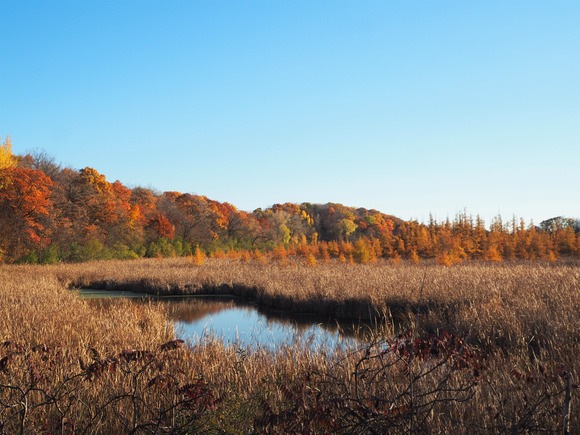 Hennepin County is working to establish 6,000 acres of conservation easements by 2040. This will provide habitat for a diversity of wildlife, preserve space for residents to connect with nature, and make our communities more resilient to climate change.
A conservation easement is a set of development restrictions that a landowner voluntarily places on their property to protect its natural resources. They provide permanent protection, ensuring that the land is preserved for future generations while allowing the landowner to continue to use and enjoy what they value about their land.
Building on a tradition of land protection
Hennepin County along with partners like the Minnesota Land Trust, the Minnesota Board of Water and Soil Resources, cities, Three Rivers Park District, and private landowners have already established nearly 1,000 acres of conservation easements across 60 different easements.
Over the past five years, Hennepin County has greatly expanded and accelerated the work of establishing conservation easements by partnering with a nonprofit organization, the Minnesota Land Trust, to secure funding through the state’s Lessard-Sams Outdoor Heritage Fund.
Since 2018, Hennepin County and the Minnesota Land Trust have been awarded over $9.3 million from the Outdoor Heritage Fund, making possible the addition of more than 360 acres of conservation easements as well as funding restoration projects on protected land.
Hennepin County recognized as Partner of the Year
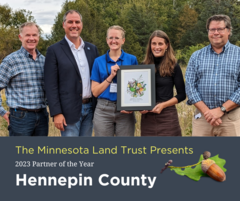
The Minnesota Land Trust recently recognized Hennepin County as their Partner of the Year. This recognition is a testament to the commitment both organizations have to ensuring exceptional habitat continues to have a place in the most populous county in Minnesota.
Learn more
Read our new climate action article to learn more about how conservation easements support resilient ecosystems and mitigate the impacts of climate change and find examples of recent success in protecting and restoring habitat.
If you or someone you know is interested in leaving a legacy of environmental stewardship by establishing a conservation easement, get started at hennepin.us/land-protection.
|
 |
On October 24, the Hennepin County Board of Commissioners passed a resolution to develop a closure plan for the Hennepin Energy Recovery Center (HERC) between 2028 to 2040. The resolution included a condition that the HERC closure plan will continue to comply with state law, meet county climate goals, and achieve our Zero Waste Plan (PDF).
Hennepin County plans to aggressively pursue zero-waste policies, programming, and infrastructure. The county will advocate for policy changes at the state, county, and city levels to move toward zero waste and make meaningful progress toward climate emissions reductions. The county will also need to ensure continued funding for natural resources programming and expanded zero-waste efforts.
The county board is seeking comments from cities regarding proposed policy issues relating to closure of the HERC. The HERC closure plan is due to the board by February 1, 2024.
Learn more from the report (PDF) shared with the board in advance of this action.
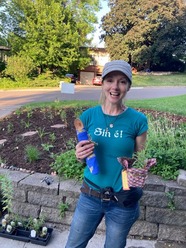
Become a champion for clean water in your community! Minnesota Water Stewards is a program that certifies and supports community leaders to prevent water pollution and educate community members to conserve and protect our waterways.
Applications to join the 2024 Hennepin County cohort of Minnesota Water Stewards are due November 30.
Upcoming virtual information sessions are scheduled for:
- Tuesday, November 7 at 5 p.m.
- Tuesday, November 21 at noon
For more information, contact Alex Van Loh at avanloh@freshwater.org.
|
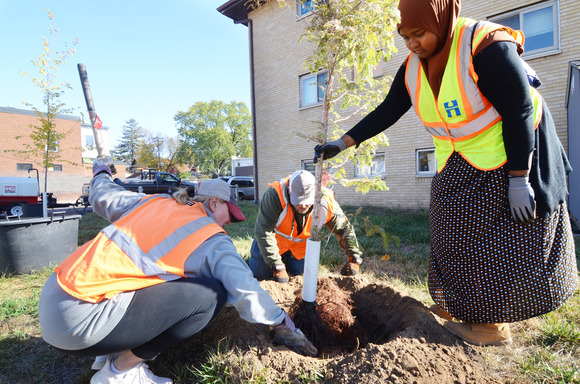 Hennepin County recently awarded 25 Healthy Tree Canopy grants totaling nearly $500,000. Grant recipients include 13 cities, two affordable housing properties, five schools, and five nonprofit organizations.
Grant funding will be used for a variety of activities, including conducting tree inventories, expanding the capacity of city forestry teams, treating or replacing ash trees, educating residents on the benefits of trees, and engaging them in tree planting efforts. More than 620 trees will be planted through the grant projects.
The grants will improve livability and reduce disparities by planting trees in areas experiencing disproportionate amounts of economic, environmental, and health inequities. The grants will also protect people and increase the county’s resilience to climate change by increasing the benefits that trees provide.
Learn about the grants awarded. For more information, contact trees@hennepin.us.
Restoration work funded in part by a Hennepin County Good Steward Grant
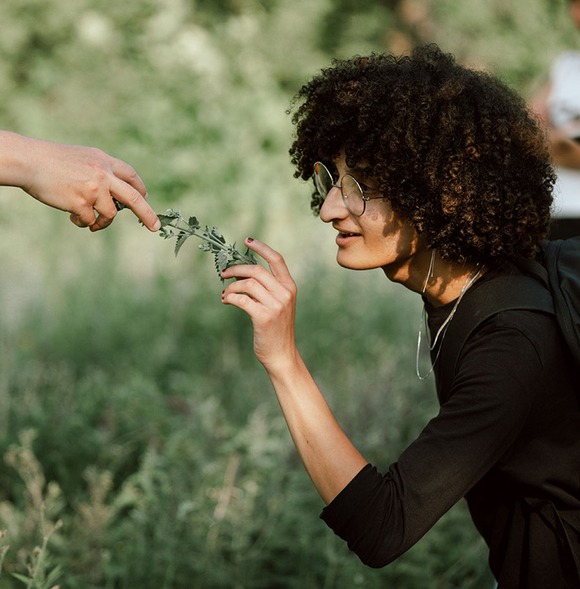 Nicollet Island sits within the Mississippi River just north of Saint Anthony Falls in downtown Minneapolis. Before European colonization, the island supported river forest and oak savanna plant communities. Over the years, the island’s natural areas have degraded through industrialization and neglect, allowing buckthorn and other aggressive species to move in.
Friends of the Mississippi River are restoring the island’s natural areas with support from a Hennepin County Good Steward Grant, in partnership with the Minneapolis Park and Recreation Board, Mississippi Watershed Management Organization, and Nicollet Island-East Bank Neighborhood Association.
Laura Domyancich-Lee, an ecologist with Friends of the Mississippi River, says they weigh several factors in their restoration work, including identifying historically native plants and their uses — such as habitat quality, medicine, food, or specific spiritual purposes — with current needs and conditions, including social walking trails and the desire for residents to connect with the river.
The work entails buckthorn and garlic mustard removal, prescribed burns, and pollinator plantings. “With our restorations, we try to be sure we have nectar and floral resources for pollinators throughout the growing season,” says Domyancich-Lee.
Community connections are also a big part of Friends of the Mississippi River’s restoration work. For instance, this past June during Pride month, volunteers recruited from the LBGTQ community helped plant pollinator demonstration boxes. “The most successful restoration work in shared community spaces is when there are long-term stewards connected to that place,” says Domyancich-Lee.
Applications for Good Steward Grants due November 14
Good Steward Grant applications are being accepted through November 14.
These grants typically support smaller, community-based or single applicant projects to protect natural resources, such as constructing rain gardens, stabilizing stream banks, restoring native vegetation, installing vegetated filter strips, or implementing other best management practices. The typical funding amount is $10,000 to $20,000.
See the Good Steward Grant application guidelines (DOCX) for more information. Access application materials and submit your application online through the Supplier Portal.
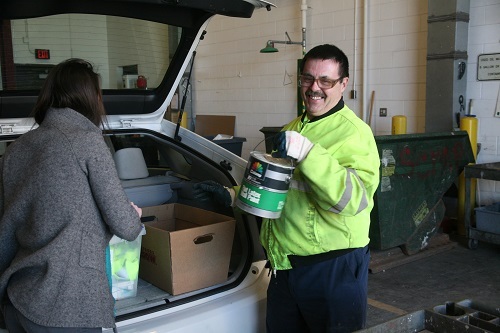 Hennepin County operates drop-off facilities in Brooklyn Park and Bloomington for residents to safely disposal of a variety of household items. This includes appliances, batteries, electronics, cords and string lights, paint, tires, and household hazardous wastes such as cleaning products, pesticides, and mercury-containing items. The county also accepts recycling, including cardboard, plastic bags and film, and organics, at the drop-off facilities.
Fall and winter are a great time to visit the drop-off facilities since they tend to be slower compared to the spring and summer. Watch this video from the City of Bloomington to learn what to expect during your visit. The video shows how you check in, describe what materials you brought, and unload your materials – all within a few minutes.
The video also describes some important guidelines for materials, such as that cardboard must be 3’x3’ or smaller with all Styrofoam and other packing materials removed.
Regular hours at the drop-off facilities are Tuesday through Saturday, 9 a.m. to 5 p.m. The facilities are closed on Sundays and Mondays. Learn more about the locations and hours, including holiday closures.
Find out more about what’s accepted, any fees and material limits or guidelines, and additional recycling and disposal options for common household items by searching the Green Disposal Guide, calling 612-348-3777, or emailing environment@hennepin.us.
Celebrating a successful season of household hazardous waste collection events
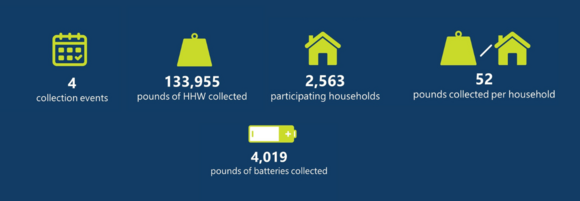 Hennepin County hosted four household hazardous waste collection events in 2023. Participation in the events was strong, with 2,563 households bringing in nearly 134,000 pounds of hazardous waste – an average of 52 pounds per household. This included over 4,000 pounds of household batteries!
The county offers collection events throughout the spring, summer, and fall to provide residents a convenient, local option for disposing of household hazardous waste. Event locations and dates for 2024 will be announced in the spring.
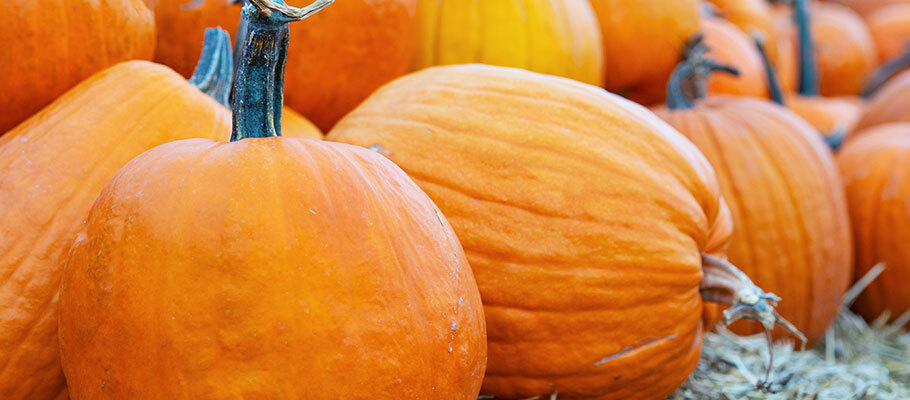 As you clean up from Halloween, don’t let your pumpkins go to waste! Compost pumpkins by putting them in your backyard compost bin or organics recycling cart or bringing them to an organics recycling drop-off. Or check to see if your city is offering any special drop-off events, such as Edina's Pumpkin Smash and Bash! Before composting, remove all candles, candle wax, paint, and other decorations. You can also simply leave them out for the squirrels and birds to enjoy!
Apartment recycling champions help their neighbors recycle

Hennepin County launched the Apartment Recycling Champions program in May with the goal of addressing barriers to improve recycling at multifamily properties. Champions are residents at multifamily buildings who are paid by the county to inspire and educate their neighbors, improve the set-up of recycling bins, provide tips, and answer waste reduction and recycling questions.
Champions help to overcome common challenges for recycling programs at multifamily properties, including limited space for recycling containers, high rates of turnover for both residents and property managers, and language or cultural barriers.
Read a feature of the program in the Sahan Journal to learn what two Recycling Champions did to improve recycling at their apartment buildings. Mohamud Roble, building on his experience working to reduce waste in his native Somalia, hosted educational events for his neighbors to teach them what and how to recycle. Alicia Brandon started talking directly to her neighbors, handed out educational materials and recycling tote bags, and put up signs directing people to the recycling room.
|
 |
 Bats are an important part of our ecosystem as they eat up to half their body weight in insects every night. Not only do they eat mosquitoes, they also contribute billions of dollars' worth of agricultural production by eating pests.
Hennepin County is home to seven species of bats, including the federally endangered northern long-eared bat. These species depend on decaying trees, caves, mine shafts, and bat houses to raise their pups in the summer and to take shelter in for the winter.
Bats in our area are struggling due to disease, habitat loss, climate change, and development, but there are many things we can do to help bats!
- Build a bat house – find plans for building a safe and suitable bat house from Bat Conservation International.
- Manage forests in the winter to avoid disturbing young bats during nesting season in the spring.
- Protect wetlands and other sources of freshwater.
- Avoid using pesticides – they can poison or kill bats, who are natural pest controllers.
- Keep cats indoors – they are one of the most common causes of bat fatalities.
- Contact the Wildlife Rehabilitation Center of Minnesota if you find an injured bat. Don’t pick it up.
- Report bats that are sick, deceased, or behaving unusually to the Minnesota Department of Natural Resources.
Find more tips for providing habitat for bats in our building and maintaining your bat house brochure (PDF).
|